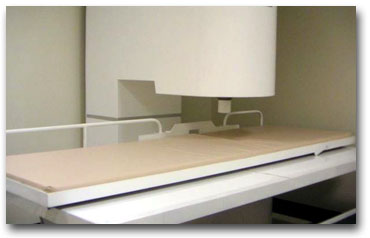|
Laurance Johnston, Ph.D. |
|
An FDA-cleared experimental device, the Magnetic Molecular Energizer (MME) has been used to treat a variety of ailments, including neurological disorders such as SCI, head injury, multiple sclerosis, stroke, cerebral palsy, Parkinson’s, and Alzheimer’s disease. With MME treatment, the affected body area is placed between two large, strong electromagnets for relatively long periods of time.
The MME device generates a powerful 3,000-5,000 gauss magnetic field.
For comparison sake, the Earth’s magnetic field is about 0.5 gauss, a
refrigerator magnet is about 10 gauss, and commonly used MRIs, can
exceed 10,000 gauss. To accrue benefit, patients often spend hundreds of
hours exposed to MME-generated electromagnetic fields. Because of the
time required, sessions are frequently scheduled on consecutive days,
usually at nights when patients can sleep. Although few results have been reported for spinal cord injury (SCI), a pilot study looked at the effectiveness of treating 12 individuals with multiple sclerosis with MME therapy. Ten had “marked improvement.” As discussed elsewhere, scientists have shown that electromagnetic fields influence the expression of neuronal stem cells, and, as such, may be useful in enhancing the effectiveness of the many stem-cell transplantation programs emerging throughout the world. Consistent with these findings, preliminary studies have suggested shown that MME-generated electromagnetic fields will do so also. As a result of these findings, several patients have combined MME treatment with stem-cell transplantation. According to Dr. Dean Bonlie, the developer of the MME device, over 30 patients with SCI have been treated with MME-generated electromagnetic fields at five clinics in the US and Canada. According to Bonlie, “some have had astounding success and some less than astounding.” Of the 16 patients he has treated, only two didn’t have some improvement. Although most of the treated patients had more long-term injuries, he believes MME therapy will be most effective if initiated sooner after injury. For example, a patient he treated five weeks after injury had some of the most dramatic improvement. Bonlie believes that simultaneous treatment with human growth hormone will enhance MME treatment effectiveness. In his case, he has used a homeopathic preparation of human growth hormone, and since doing so, has noted more improvements in MME-treated patients. He also believes that MME treatment would be most effective if the injury-site scar can be removed before treatment to enhance regenerative processes - a procedure that has been done in some stem-cell transplantation programs. In one anecdotal case discussed on a SCI-discussion forum, a 23-year-old male reported regaining significant function after multiple MME sessions. He started MME therapy 5.5 months after sustaining an incomplete cervical C6 injury from a motorcycle accident. Cumulatively, he received ~1,800 hours of treatment, often 16-18 hours daily, much of it while he was sleeping. The MME-directed electromagnetic field covered an area from his forehead to his nipples. He also traveled to China for umbilical stem-cell therapy and started more aggressive physical rehabilitation. As a result of his cumulative efforts, he recovered a variety of functions, including more hand and triceps control, abdominal and back function, and sensation in his groin and hip region.
|
|
